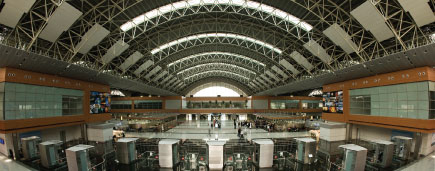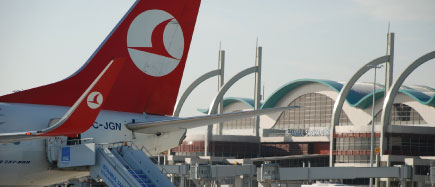
Bugday: "While the airports that are serving mainly full-service carriers saw a decline in passenger numbers, we at Istanbul Sabiha Gökçen Airport experienced a massive growth rate of 100%."
Having handled less than 50,000 passengers in 2001, the sharp increase in traffic using the airport has been nothing short of phenomenal.
While the airport only recorded 1 million annual passengers for the first time in 2005, following the acquisition by a GMR-led consortium in 2008, its traffic rose from 4.3 million at the end of that year to 6.6 million a year later.
Furthermore, between January and June 2010, more than 5 million passengers passed through the airport as year-on-year figures showed a +93% increase in domestic passengers and a +100% rise in international traffic.
According to Bugday, this continued increase in passengers using ISGIA has been largely down to the airport’s focus on serving the low-cost market. He said “We have managed to foresee the demand towards the low-fare concept and towards the low-cost airlines. Thus, while maintaining our position for the full service carriers, we outlined a model to suit the needs of the growing low-cost market.”
Preparing for future growth

ISGIA's long-term master plan outlines plans to construct a parallel runway, allowing the airport to handle 100 air traffic movements per hour.
Having inaugurated a new 1450 million, 25 million capacity terminal in October 2009, Bugday explained that the airport is perfectly positioned to capitalise on both its previous growth and the potential of the catchment area, which includes cities such as Bursa, Sakarya, Izmit and Gebze. “We have created a very modern and secure complex which appeals to all,” he said. “The terminal is constructed to serve both international and domestic passengers under one roof. The one roof system reduces the transfer times and ensures the easy access of transfer passengers from one side to the other.”
While the focus has remained on increasing the passenger numbers at ISGIA, Bugday explained that the airport is committed to developing non-aeronautical revenue streams as a viable and stable source of income. Currently, 43% of revenue is generated from non-aeronautical sources and the remaining 57% is derived directly from the airport’s aeronautical activities. The aim is for the revenue to be divided evenly between the two sources. Following the record passenger numbers recorded during the first half of this year, Bugday explained that the short-term aim for the airport is to register throughput of more than 11 million passengers for the whole of 2010. Meanwhile, a long-term master plan is also in place to prepare the airport for continued growth. Included in this are plans to construct a parallel runway, which would be the airport’s second and would increase the passenger capacity to 70 million, while the airport will eventually be able to cater for 100 air traffic movements per hour.







